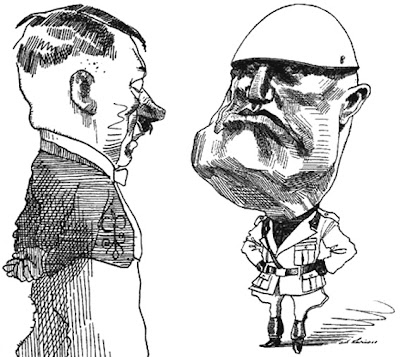Hitchcock called the chase the best use of cinema, because audiences love it and it can't be done adequately in any other medium. Since this (above) is the best chase, and if Hitchcock's right about the medium favoring chases, then you could argue that this sequence of Keaton's is the most cinematic ever committed to film.
According to animator Jonathan Lyons, Keaton got the idea when he tested a previous version of the film ("Seven Chances"), and found that the audience laughed when rocks followed him down the hill. He reshot the sequence for a lot more rocks, and the rest is history.
Here's (above) a fuller version of the sequence. It's cluttered with a big ad on the bottom, but the inconvenience is worth it.
The storyline is that Keaton stands to inherit a million dollars if he marries before a certain time. An army of local spinsters catches wind of it, and chase after Keaton wearing bridal outfits. Keaton has to avoid the spinsters and get to church in time to marry the girl he really loves.
Here's (above) a fascinating look at a Chaplin scene, shown speeded up (which is how the audience saw it), and shown slow (which is the way it was actually shot). What a revelation! I've gotta try this, both in live action and in animation!
Both videos were stolen from Johnathan Lyons' blog, "Comedy for Animators." Credit to Ben Model who originally posted the Chaplin material and did the commentary. Ben has a fascinating film channel on YouTube.
http://www.youtube.com/user/silentfilmspeed
http://comedyforanimators.com/
BTW: Milt Gray told me that A high school yearbook containing cartoons by a 17 year-old Bob Clampett is on the auction block at eBay now. I don't think Clampett owned this copy, but he was on the yearbook staff, and the book contains lots of his printed drawings. He did these when he was 17! Here's a sample:
http://cgi.ebay.com/ws/eBayISAPI.dll?ViewItem&item=130483480966&ssPageName=ADME:L:LCA:US:1123
Also BTW: Mike F. wrote an interesting comment about Chaplin's partner in comedy, Eric Cambell:
"Eric Campbell - one of the 2 or 3 greatest comic heavies in the entire history of the movies - died tragically in an automobile accident in 1917, which is why he disappears from Chaplin's troupe of regulars after the Mutuals.
Chaplin never really found a suitable replacement; at least none that was Campbell's equal. Frankly, neither did anyone else. Campbell's villains are sovivid, so over-the-top cartoony that the comparison with Bluto is almost inevitable. Likewise, it's almost impossible to imagine that Campbell and Chaplin were pals offscreen (they were). It's equally jarring to see photographs of him out-of-character, smiling and apparently harmless.
Along with Margaret Dumont, Franklin Pangborn and James Finlayson - he's easily among the most memorable live-action comedy foils of all time. BTW, his greatest performance, arguably, is in Easy Street. Once seen, it can never be forgotten."

















































